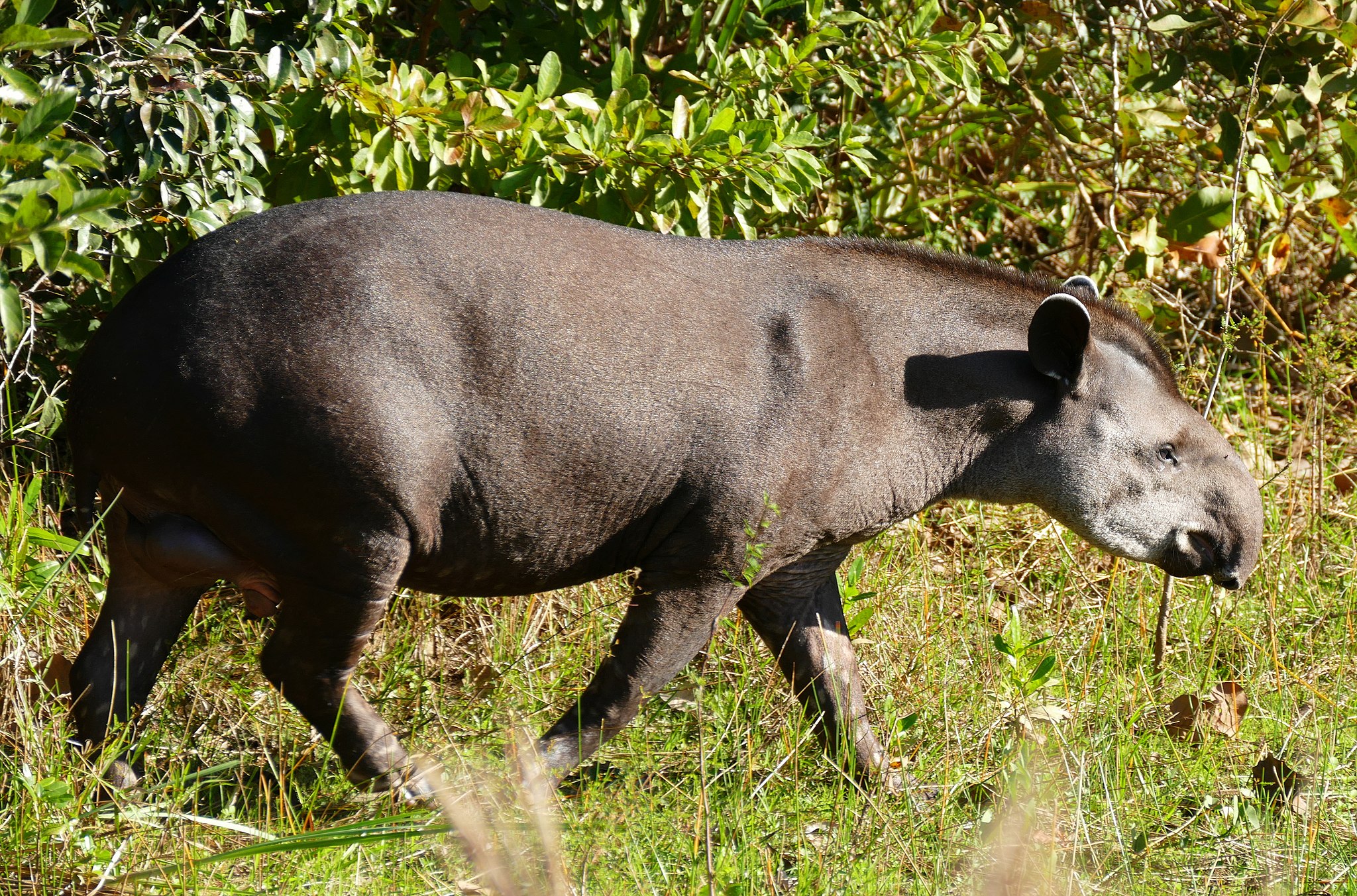Tapirs could be key in helping degraded rainforests bounce back
- Nature Conservation
- Ecosystem Restoration
- Wildlife
- Mammals
- Forests
- Pollinators
- Southern America Realm
Tapirs may help rainforests recover after destructive human use and increase the amount of carbon they hold, new research has found.
The study, based in the Brazilian Amazon, found that these fruit-eating mammals spend significantly more time in burned forests than those that are relatively untouched. As a result, tapirs leave behind more seeds in their droppings in these “degraded” landscapes.
“The role that tapirs play in seeding degraded forests is another good reason for conserving this last representative of the megafauna of South America,” Lucas Paolucci, the paper’s first author and an ecologist at Brazil’s Federal University of Lavras and the Amazon Environmental Research Institute, said in a statement.

A lowland tapir in the state of Mato Grosso in Brazil. Image credit: Wikimedia Commons, Bernard DUPONT
Paolucci and his colleagues reported their findings in the journal Biotropica on Feb. 25.
Related to horses and rhinos and about the size of large pigs, Brazil’s lowland tapir (Tapirus terrestris), also known as the Brazilian tapir, is listed as vulnerable by the IUCN. The slow-reproducing animal doesn’t rebound well from intensive hunting, and its forest habitat is dwindling.
But because it’s big—stretching to 2.2 meters (7 feet) long and weighing in at 250 kilograms (550 pounds)—it can ferry around many different types of seeds, including large ones, which it then deposits in the forest with its dung.
Until now, however, most scientists have investigated this “seed dispersal” in more pristine forests. Paolucci and his colleagues wondered about the impact of tapirs in degraded forests.
Read more on Mongabay


